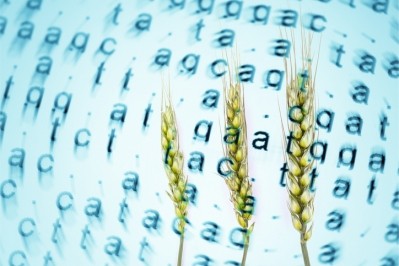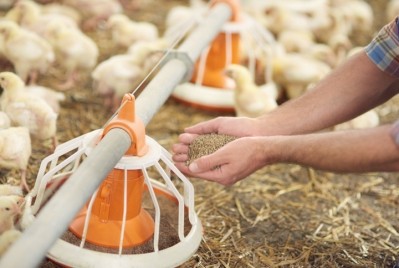Ensuring the resilience of the EU feed sector
The event was held in Ystad, Sweden, on 14-16 June, and was organized by FEFAC, DAKOFO, and FS, trade groups representing the European, Danish, and Swedish feed industries, respectively.
The conference was attended by over 200 stakeholders; two high-level sessions analyzed key policy and market drivers for circular feed solutions.
Immediate past FEFAC president, Asbjørn Børsting, stressed how the EU regulatory framework needs to support the development of innovative technologies that boost sustainability such as new genomic techniques.
Last week saw FEFAC launch a new EU awareness campaign to boost uptake of advanced feeding techniques: nutritional solutions that enable the reduction of ammonia or methane emissions, for example, or dietary approaches aimed at helping farmers minimize the use of antibiotics or improve animal welfare.
The feed manufacturing industry representatives said there is a low level of uptake of such dietary interventions in the EU market, a fact that is evident in the design of member states' national strategic plans under the Common Agricultural Policy (CAP).
Only Portugal and the Flanders region in Belgium, to date, have made certain animal nutrition solutions eligible for CAP support.
The onus is on the feed industry to demonstrate what animal nutrition technologies can bring to the EU livestock and aquaculture production sectors in terms of enhancing their sustainability profile. And, in doing so, stakeholders will then be able to fully evaluate and approve the investment potential of such feeding technologies in full confidence, said Børsting.
Newly elected FEFAC president, Pedro Cordero, said the congress put the spotlight on current sustainability challenges and opportunities that the feed and livestock sectors are facing. “We know that we still have a lot to learn and do, but we will continue to deliver practical and viable tools jointly with our chain partners which will allow the EU livestock and aquaculture sector to stay on track to achieve most of the relevant EU Green Deal goals.”
The event showed the feed industry’s willingness to stay ahead of the curve, how it can help farmers remain competitive while addressing legitimate societal demands, goals expressed in the EU Green Deal, said FS president, Jan Rundqvist.
EU protein plan
Pierre Bascou, acting deputy director general, DG Agri, in his keynote speech, shared a positive short-term market outlook for the livestock and feed industries, despite the ongoing war in Ukraine and the drought in southern European markets.
He pointed to a range of EU policy drivers and measures that aim to boost the EU livestock sector's environmental and climatic performance. He also revealed that the EU Commission will release an updated EU protein plan at the beginning of 2024, which will be broader in scope than earlier editions.
Copa-Cogeca secretary-general, Pekka Pesonen, expressed concerns about EU Green Deal policy objectives, which he believes are aimed at undermining the viability of the European livestock sector. He argues that the model, as it stands, will only undermine EU food security and autonomy goals along with hindering the rural economy.
Economic incentives
Hanne Søndergaard, EVP and chief agriculture and sustainability officer, Arla and Marc Sneyders, head of sustainable operations at Bayer CropScience, outlined their company-specific sustainability initiatives related to dairy production and agronomic approaches, respectively. They both stressed the importance of a valid economic incentives model to enable farmers to leverage innovation aimed at lowering their environmental footprint.
The conference also featured three workshops that evaluated the sustainability pressure points across different farm animal species from farmed fish to ruminants to pigs and poultry. Those sessions examined animal nutrition strategies to reduce methane and ammonia emissions as well as ways to calculate the environmental footprint of livestock production.
The limitations of the current EU regulatory framework was top of mind for one of the workshop moderators, Nutreco's Reinder Sijtsma, who is the FEFAC premix and mineral feed commitee chair.
New FEFAC lead
FEFAC’s 68th General Assembly, held on June 14 in Ystad, elected Pedro Luis Cordero Castillo as its new president. His tenure starts now and runs until 2026.
Cordero is vice-president of the Spanish Feed Industry Association (CESFAC). He is a graduate of the Complutense University of Madrid and served as managing director of Nutreco business, Nanta, Spain and Portugal.
“I look forward to representing the interests of the European compound feed and premix manufacturers in these challenging times, trying to buffer the impacts of the geopolitical crisis caused by the Russian aggression in Ukraine and climate change, which affect the economic sustainability of the EU livestock and aquaculture value chain.
"As FEFAC, we welcome and support the EU Commission's efforts to increase the resilience of our agri-food systems to better withstand external shocks. This requires the full functioning of the single market and a level playing field for our livestock sector facing growing competition from imports not meeting the same high EU standards on sustainability and animal welfare.
"As FEFAC president, I will do my utmost to promote circular, sustainable feed solutions, integrating them into our best-practice professional recommendations to assist our customers with the transition to more sustainable production systems, as laid down in our FEFAC Sustainability Charter 2030."









